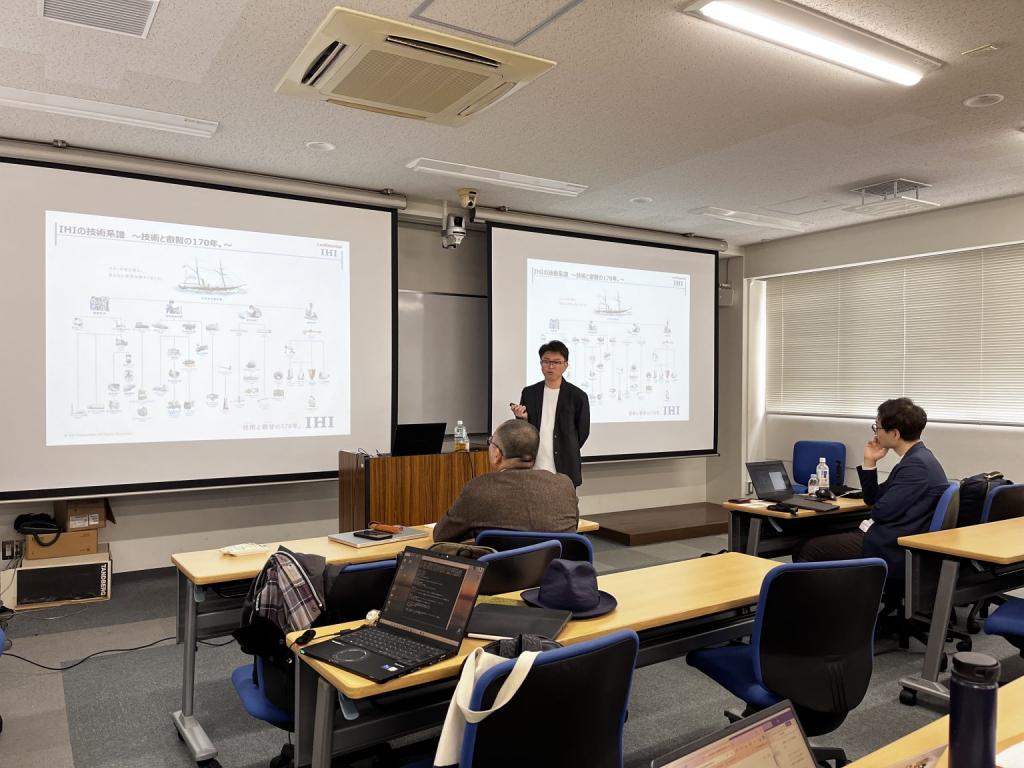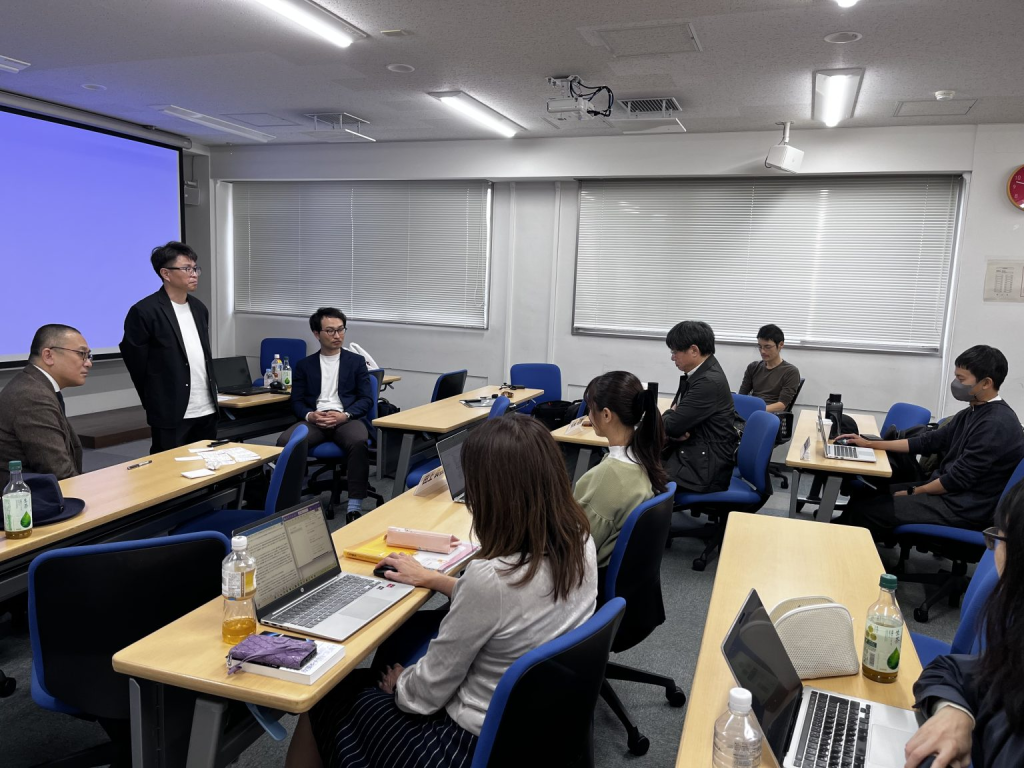Green Entrepreneurship Studies
News
November 13, 2024 Green Entrepreneurship Lecture No.4 “Toward Carbon Neutrality in 2050” IHI’s Future Energy Strategy was held.
held. In this lecture, we welcomed Mr. Yuichi Nishiyama (Chief, Planning Group, Planning and Administration Department) and Mr. Yuta Sato (Group Manager, Planning and Administration Department, Resources, Energy and Environment Business Area) from IHI Corporation to learn about the frontline decarbonization technologies and energy strategies that companies are working on. Professors Karube and Yamada facilitated the session. Under their facilitation, a lively discussion ensued on IHI’s initiatives and issues facing the energy industry as a whole.
IHI’s Challenge: A Carbon-Neutral Society in 2050
Four Business Areas and Growth Strategies
In his opening presentation, Mr. Nishiyama clarified the overall picture of IHI’s business. IHI, which has been in business for 170 years, is comprised of four pillars: “Resources, Energy & Environment Business,” “Social Infrastructure Business,” “Industrial Systems & General Machinery Business,” and “Aerospace Business. In particular, the “Resources, Energy & Environment Business” is the key to achieving carbon neutrality.
Ammonia fuels and carbon recycling technologies are playing a central role in the transition to a decarbonized society. These technologies aim to reduce CO₂ emissions while ensuring the stability of energy supply.
Possibilities and Challenges of “Ammonia Fuel”
Mr. Sato gave a detailed explanation of the possibilities offered by ammonia fuel. Ammonia is expected to be a zero-emission fuel because it does not emit CO₂ during combustion, and IHI has been conducting experiments in thermal power co-firing using fuel ammonia, and has successfully achieved 20% co-firing at the Hekinan Thermal Power Plant. This experiment is attracting attention as a realistic approach to promote decarbonization while utilizing existing facilities.
On the other hand, ammonia fuel presents several challenges: in addition to technical issues such as reducing NOx emissions and improving energy efficiency, safe handling of highly toxic ammonia and cost issues were also identified.
We have to think about the entire value chain, including production, transportation, and disposal, not just burning ammonia,” Sato said, explaining IHI’s comprehensive strategy.
The reality of the energy mix as seen in the data
Mr. Nishiyama explained the practical challenges in expanding the introduction of renewable energy based on data.
Japan already has the world’s largest amount of solar power generation per land area, despite the geographical limitations of its lack of flat land. Even so, this is not enough to meet our energy needs,” Nishiyama pointed out. He also touched on the risk that an immediate shutdown of thermal power generation would pose to the power supply, stressing that “an energy mix that balances renewable energy, thermal power, and even nuclear power is essential to achieve a carbon-neutral society.
As a specific example, data for one rainy day in 2023 was presented. On that day, without thermal power generation, there would be a 70% shortage of electricity supply in major Japanese cities, highlighting the difficulty of ensuring a stable energy supply.
Q&A session with lively discussion
The second half of the lecture was a question and answer period. Students eagerly asked questions, which were carefully answered one by one by IHI’s two lecturers.
・NOx Emission Control Technologies
A wealth of anecdotes were shared about the progress being made on the NOx problem through fairly robust scientific empirical research and development of technologies that create combustion conditions that do not combine with oxygen and the introduction of aftertreatment equipment.
・Human Resource Development Initiatives
Specific examples of reskilling were presented, including on-the-job training (OJT), learning opportunities provided by university endowed courses, and in-house internships.
・International competitiveness of decarbonization technology
How to deploy technological capabilities in the international standardization arena was discussed, and the importance of rulemaking and institutional strategies as a company based on competition among nations in each global geopolitical bloc was shared.
Some of the younger students frankly commented that “the more we know, the more issues there are,” to which Professor Karube responded, “It is precisely because the issues are complex that we need to increase our resolution and think from a long-term perspective.
Message to the Next Generation
Mr. Nishiyama and Mr. Sato left the message that “corporate challenges will greatly influence the future state of society,” and emphasized that the power of the younger generation is essential to realize a sustainable society.
This lecture was an opportunity not only to learn about the frontiers of environmental technology, but also to learn how traditional companies and large organizations think about solving global issues and the importance of a long-term perspective.
In the end
Kyoto University’s Green Entrepreneurship Lecture is a unique MBA program that rethinks global environmental issues from a broad business administration and business perspective. In the next lecture, examples of green innovation in local communities will be presented. Please watch out for this series of lectures as we continue to expand our perspectives on creating a sustainable future.



